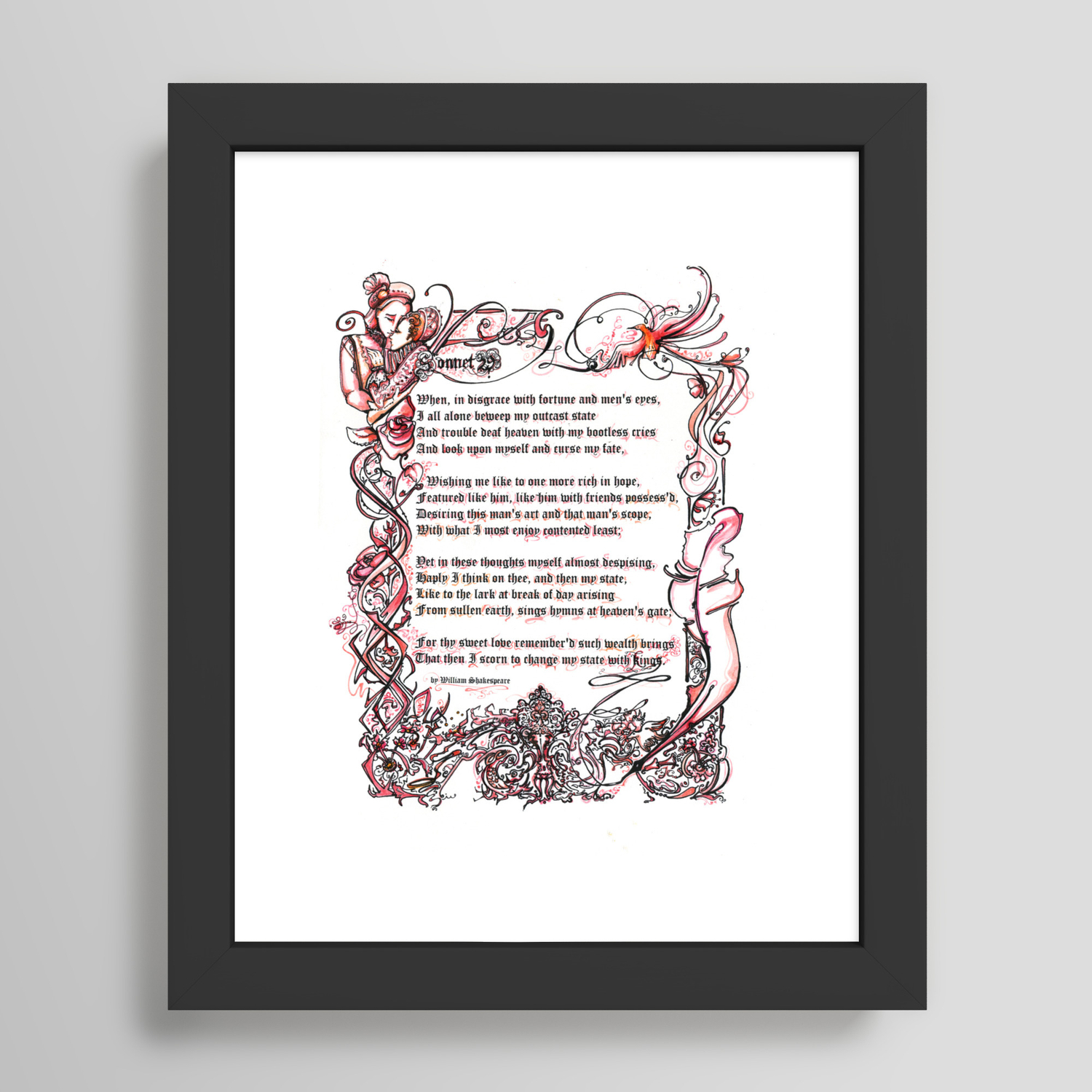

Speaker wished to have some mans good looks, other mans friends, someone’s skills and opportunities from someone else. He bothers God with his cries that falls on the deaf ears and curses his fate. It states that when the writer is in disgrace with one and all and his luck has abandoned him, he sits all alone and cries on the fact that he is an outcast. The lyrics in the sonnet in its simplest form tries to convey the feelings of the writer. That then I scorn to change my state with kings.” William Shakespeare Sonnet Lyrical Interpretation of Sonnet 29 (Like to the lark at break of day arisingįrom sullen earth) sings hymns at heaven’s gate įor thy sweet love remembered such wealth brings Haply I think on thee, and then my state, Yet in these thoughts myself almost despising,

That then I scorn to change my state with kings.Featured like him, like him with friends possessed,ĭesiring this man’s art and that man’s scope, “For thy sweet love remembered such wealth brings Enjambment: It is defined as a thought in verse that does not come to an end at a line break instead, it continues to the next line.Alliteration: Alliteration is the repetition of consonant sounds in the same line in quick succession such as the sound of /th/ in “Haply I think on thee, and then my state.”.For example, “lark” stands for hope and good fortune. Symbolism: Symbolism is using symbols to signify ideas and qualities, giving them symbolic meanings different from literal meanings.For example, “From sullen earth sings hymns at heaven’s gate.” Here, Shakespeare has personified earth as if it is a human being that can sing. Personification: Personification is to attribute human characteristics to non-human or lifeless objects.Consonance: Consonance is the repetition of consonant sounds in the same line such as the sound of /s/ “Yet in these thoughts myself almost despising”.For example, “I all alone beweep my outcast state” and “That then I scorn to change my state with kings.” Imagery: Imagery is used to make readers perceive things involving their five senses.Assonance: Assonance is the repetition of vowel sounds in the same line such as the sound of /i/ in “Wishing me like to one more rich in hope” and the sound of /e/ in “Haply I think on thee, and then my state.”.The analysis of some of the literary devices used in this poem has been discussed below. Shakespeare has also used some literary devices to bring depth in this poem.

Literary devices are tools used by writers to convey their emotions, ideas, and themes to make texts more appealing to the reader. Analysis of Literary Devices Used in “Sonnet 29” In short, sonnet 29 is also about self- motivation. The poem also explains how love brings optimism and hope for people who feel lonely and oppressed. The poet discusses his miserable plight and the impact of love. Major Themes in “Sonnet 29”: Anxiety, love, and jealousy are the major themes of this sonnet.What, however, stays in the minds of the readers is the magical effect of love that eradicates his sorrow and makes him feel special. This thought of love provides him immense pleasure and removes his negative feelings. After cursing his present sad state, he suddenly talks about a special person, and his mood changes in a dramatic way. He wishes to be rich, satisfied, and fortunate like them but meets only failures and disappointments. Also, he is envious from the successful and talented people around him. He feels that even God is not answering his calls. He curses his poor fate for his catastrophic condition. The poem begins with the description of the speaker’s discontent and his lamentation over the miserable plight of life. “Sonnet 29”, As a Representative of Love: This poem is about a speaker, initially downcast about fate, but becomes excited when he recalls his beloved.It also illustrates the power and impact of true love. The poem speaks about an unfortunate man, frustrated with the present state of his life. It is famous for its themes of love and hopelessness. Popularity of “ Sonnet 29”: Sonnet 29 is one of the best sonnets written by William Shakespeare.


 0 kommentar(er)
0 kommentar(er)
